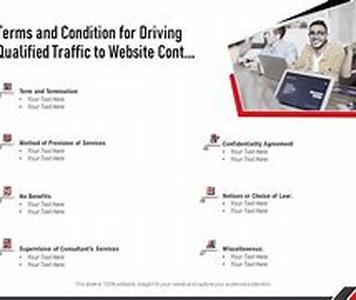
MILLIONS OF MAIL ORDER CATALOGSAn Average Mailing By A Small, One Person Mail Order Company Isgenerally About A Thousand Pieces, And Many Such Operatorsrarely Mail More Than A Hundred Pieces Per Week. If You Knowyour Conversion Statistics, You Know That The Order Return Onmailings Is About 1 To 2 When Using A Rented List Of Names, Upto 5 Or More When Mailing To Your Own Customer List.Using Those Figures, The Response Rate Would Be About 2 Ordersfrom A Mailing Of 100 When Using A Cold List, And About 5 To 10orders When Mailing To Your Own Customer List For Each 100pieces Mailed.Contrast This To A Major Catalog Mailing House Such As Miles House, Lillian Vernon, Johnson-Smith Or L.L.Bean, Each Of Whom Might Consider A Mailing Of Six Millionpieces A Month Or Every Few Months.Keep In Mind That These Are Catalog Merchandisers - Massmailers, Not Manufacturers. Not Publishers. Mailers!They BUY What They Sell From Somebody. It Could Be From You!WHAT ARE THEY LOOKING FOR?Catalog Houses Are Owned And Operated By Extremely Sharp Peopleand They Are Highly Selective In The Products They Choose Forinclusion In Their Catalogs, So To Even Be Considered, Yourproduct Must Pass Some Pretty Rigid Tests:1. Since Some Catalog Companies Specialize In A Certain Type Ofmerchandise, They Will Choose Only What They Think Theircustomers Will Buy.2. Virtually All Of Them Will Want To Test-market A Product(possibly Only A Hundred Or So) Before Making A Complete Catalogmailing. If The Test Shows Promise, They Will Purchase A Largequantity (1,000 To 5,000 Or More) For Their Roll-out Mailings...and Continue To Purchase Such Quantities As Long As The Productcontinues To Sell.3. Catalog Mailers Want To Deal As Close To The Original Sourceas Possible, Such As Inventor, The Patent Owner, Copyrightholder, Manufacturer Or Publisher. The Reason For This Is Simplythat These Are People Who Can Offer Them The Largest Discount Onquantity Purchases. If You Are Merely One Of Many Dealers Whohad To Purchase The Product From A Wholesaler Who Purchased Froma Distributor, Who Purchased The Product From The Manufacturer,you Would Not Be In A Position To Offer The Lowest Price To Thecatalog Company.4. The Item In Question Should Be New And Unique, Not Somethingthat's Been Around For Years. Naturally, It Should Be A Goodmail Order Item.HOW YOU CAN QUALIFY FOR ACCEPTANCEFirst And Foremost, You Must Look And Act The Part Of Anestablished, Professionally Operated Business. This Means Youmust Have Printed Stationery With A Company Name That Coincideswith The Products You Are Offering, And All Correspondence Mustbe Typewritten.If That Seems Trite And Elementary, You Would Be Surprised Tosee How Many Companies Receive Scribbled Hand Written Notes Onruled Paper With Wording Such As "I Would Like You To Include Myproduct In Your Catalog." Sorry, It Just Doesn't Work Like That.Even If You Are Not The Actual Inventor Or Manufacturer Of Theproduct You Are Selling, You Can Qualify To Have It Included Ina Large Mailers' Catalog Where Everyone Can Profit From It.Imports Are Very Popular Catalog Sellers, For Instance, So Ifyou Locate A New Item From Overseas, You Can Arrange To Becomethe Distributor. Yes, It Means A Sizable Investment Forstocking Inventory, But If You Have Faith In What You Plan Tosell, It Should Be Worth Investing In.Before Offering It To Any Catalog Mailer, However, It Would Bein Your Best Interest To Test-market The Item Yourself. Youcertainly Don't Want To Offer A "loser" To A Major Catalogmailer. You'll Want To Be Sure This Is Something That Will Sell,so Everybody Is Happy With The Deal. Perhaps Even Moreimportantly, It Will Bond Your Relationship With The Catalogcompanies And They Will Be Eager To Do Business With You Thenext Time You Come Up With A New Product.PRICING YOUR PRODUCTThis Is Crucial. A Price That's Too High Means It Will Not Beaccepted; Priced Too Low And You Will Not Make A Profit - Nomatter How Many Are Sold.Keep In Mind That Some Catalog Mailers Specialize In Low Priced(10 Or Less) Items, While Others Have Geared Their Sales To Thehigher Bracket Of 50 Or More. When Making A List Of Cataloghouses To Approach, Check Their Catalogs For Prices Of Theircurrent Merchandise.There Are Three Basic Levels Of Retail Prices:1. The Pre-established Price By Owner Or Manufacturer2. Actual Dollar Value Based On Production Costs3. Perceived Value By Prospective BuyersIf You Are Not The Primary Source For Your Product, Themanufacturer May Have Already Set The Retail Price Along Withdistributor And Wholesale Discounts, So You Will Have To Workthose Figures In Any Deals Made With Catalog Companies.Assuming You Have Pricing Control (granted By The Originalsource, Or You Are The Originator) You Can Set The Retail Priceaccording To The Production Costs Which Can Be A 5-to-1 Or 10-1ratio. If The Item Costs 1 To Make, You Can Set A Retail Priceof 5 Or 10 On It, Depending On What You Think It Is Worth Tothe Consumer.SIMPLIFY YOUR PRICE STRUCTURE TO COMPANIESThe Most Common Price Structures Are Usually Set In Variousquantities Like Dozen Or Gross; Or, 100, 500, 1,000, Etc. Don'tuse These Price Structures When Trying To Interest Catalogcompanies In Your Product. Right From The Start, Give Them Yourrock Bottom Lowest Possible Price.For Examples, If Your Usual Prices Are:100 4.50; 500 3.75; 1000 2.75 And 5,000 1.95give Them Your 5,000 Quantity Price No Matter How Many Theyorder For Their Original Test. Even If They Only Want 100 Fortesting, Give Them Your 1.95 Price - But Be Sure To Tell Themthis Is Your Lowest Price That Is For Regular 5,000 Quantitypurchases, So They Know They're Getting The Good Deal.TIME TO CREATE YOUR PROMOTIONAL PACKAGECompany Buyers Are Busy People, So You'll Want To Make Yourpresentation Quickly, Clearly, And Distinctly, Eliminating Allfluff And Extraneous Material Or Wording That Might Tend To Bogthings Down.Here's What You'll Need:Descriptive Folder Or Flyer About The Product (Information Sheet)Glossy Photo Of The ProductPossible Advertising Copy (although They Will Probably Re-writeit)Terms Of Your Sale, Including Freight ChargesBrief Cover Letter(Optional) Sample Of Your Product IF It Is Small, Light Weight,inexpensive, And If You Think It Will Impress The Company.Send This Mailing Package Via First Class Mail!How Many Of These Promotional Packages Should You Mail? Only Youcan Answer That Question, But Here's A Tip: Don't Expect Only 10or 12 To Produce Much Response For Your Product. It Mightrequire 50 To 100 Or Even 500 Such Mailings Before You Begin Tosee Worthwhile Results. Of Course, A Lot Depends On The Productitself And Whether It Is For The General Public Or Restricted Toa More Selective Audience.Whenever Possible, Try To Determine What Type Of Merchandiseeach Catalog House Offers Before Sending Them Your Offer. Ifthey Cater Only To Men And Your Product Will Be Used Primarilyby Women, Why Waste Time And Money? The Same Would Apply To Alow Priced Item Such As 5 Offered To A Catalog House Whoseclientele Happened To Be Sophisticated Or Wealthy Peopleaccustomed To Buying Merchandise In The Hundreds Of Dollars.Match Your Product With The Catalog Company's Line As Closely Aspossible.HANDLING THE BUSINESSIf Your Product Is A Good One And If You Have Made A Goodimpression In Your Promotional Materials, Sooner Or Later Youwill Get An Order For A Trial Quantity.Fill The Order Promptly. Use Sturdy Boxes And Have Your Ownshipping Label (printed With Your Company Name Address) Oneach Carton, Typing The Catalog Company's Name And Address Withthe Customer's Shipping Number Above The Name.SELLING ON CREDITUnlike The Conventional Mail Order Business, Selling To Cataloghouses Is Not A Cash-with-order Type Of Operation. It'sconducted On Credit, So You'll Need Invoices To Send To Yourcustomer After Shipment Has Been Made. There Are A Fewvariations Of Credit Terms, But The Best For You Will Be"Payment Due EOM Or 2 Discount Within 10 Days. "EOM" Means Endof The Month Following The Date Of Shipment.Use Your Best Judgment Whether You Will Ship Prepaid Or Billyour Customer For The Shipping Charges.HERE'S A FINAL TIP If You Can Get Some Free Publicity For Your Product Along Theway, It Can Help You Reach Catalog Houses In Addition Tobringing You Additional Sales.Check Magazines That Are Read By The Type Of People Who Will Useyour Product And Look For Departments Such As "New Products."Many Magazines Carry Such A Department Under Different Titles.Send A Publicity Package To The Editors Which Will Include Theglossy Photo Of Your Product, News Release That Tells Who Willbe Interested In The Product And Why, And A Brief Cover Letter.If You Get A Few Magazines To Accept Your Offer, They Will Giveyou A Mention In Their New Products Department. This Will Inturn Bring You A Few Or A Few Hundred Orders, Depending On Thecirculation Of The Magazines And How Much Demand There Might Befor Your Product.More Importantly, It Can Link You Up With Some Catalog Houses.They Often Scan Magazines Looking For New Products To Befeatured In Their Catalogs. Thus, Instead Of You Contactingthem... They Will Contact You.The End Result Is That It Can Bring You Many Retail Orders Aswell As Attract A Few Catalog House Buyers Who Will Ultimatelysell Your Product In Their Catalogs.If Each Catalog House Mails 10 Million Catalogs A Year, And Yourproduct Is Featured Inside, I Shouldn't Have To Tell You Howmany Products Can Be Sold This Way. Better Stock Up Now!





